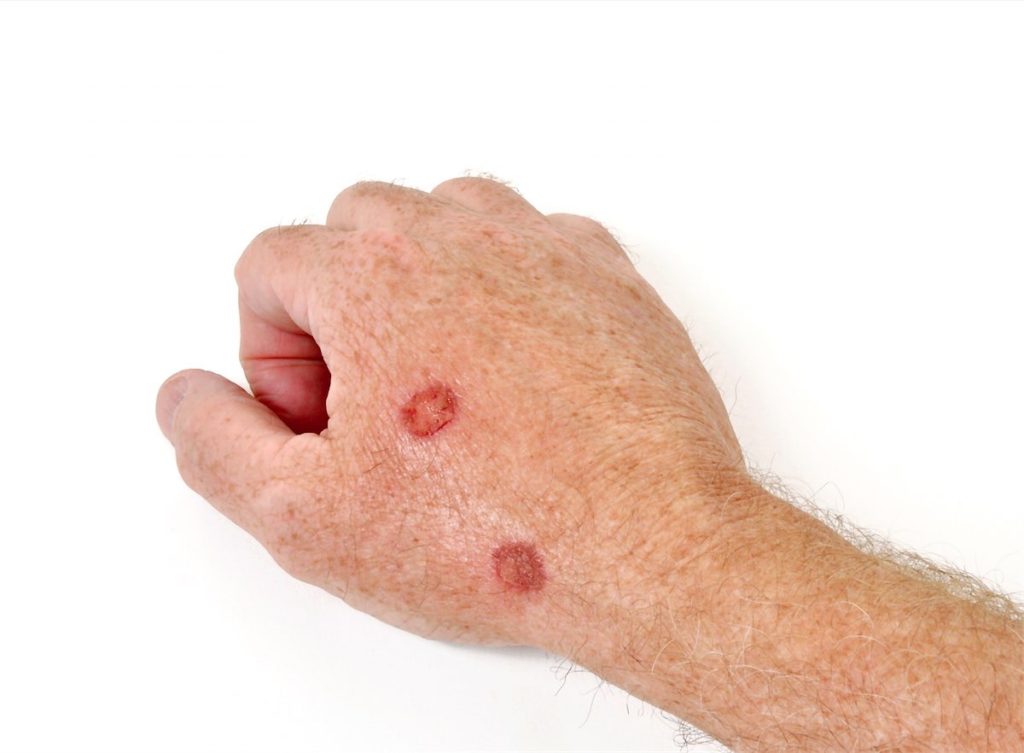Actinic keratoses are pre-cancerous thin, scaly or rough non-healing areas on the skin. If left untreated actinic keratoses can progress to squamous cell carcinoma and less commonly basal cell carcinoma. Actinic Keratoses develop on sun exposed parts of the body such as the face, ears, scalp, back of the hands, and lower legs. People most at risk for developing actinic keratoses are those with a fair complexion, blue or green eyes, older that 40 years of age, history of significant sun exposure or tanning with UV light. Actinic keratoses are diagnoses by physical exam. Occasionally actinic keratoses are diagnosed with a skin biopsy.
Signs of AK's:
- Dry, Scaly, & Rough Patches
- Red Bumps
- Thick Red Scaly Growths
- Crusted growth vary in color from brown to yellowish black
- A growth resembling a horn of an animal (cutaneous horn)

Prevention
Actinic keratoses can be prevented by avoiding sun during peak hours 10am- 4pm, wearing sunscreen daily with repeat applications while outdoors, and/ or wearing protective clothing. Preventative skin exams are recommended to help diagnose and treat these areas.
Risk Factors for AK's:
- Fair or Freckled Skin
- Blonde or Red Hair Color
- Blue, Green, or Hazel Eyes
- 40 years or Older
- Tanning bed use
- Excessive sun exposure
Treatment Options:
- Cryotherapy causes freezing and death of the pre-cancerous
- Chemotherapy medications include 5- fluorouracil, imiquimod, ingenol mebutate, and diclofenac. These medications prevent the pre-cancerous cells from growing and make them a target for the immune system to attack them.
- Chemical peels or ablative laser resurfacing removes the pre-cancerous cells on the skin surface and allows wound healing and regeneration of new layers of skin.
Actinic keratoses can be treated with several modalities such as cryotherapy, topical chemotherapy medications, topical retinoids, chemical peels, ablative laser resurfacing, or photodynamic therapy
The key with actinic keratoses is to treat them before they progress into skin cancer. Destroying these precancerous cells early can help prevent the anxiety surrounding surgery or lengthy superficial radiation procedures, scars, pain, and reduce health care costs.
Schedule a Skin Cancer Screening
If you have concerns with the health of your skin or need further information on Skin Cancer types, treatment, or prevention, please feel welcome to call High Valley Dermatology.




